
Acacia latior is a shrub belonging to the genus Acacia and the subgenus Juliflorae that is endemic to western Australia.

Acacia concolorans is a shrub belonging to the genus Acacia and the subgenus Phyllodineae that is endemic to Western Australia.

Acacia hystrix is a shrub belonging to the genus Acacia and the subgenus Phyllodineae that is endemic to south western Australia.
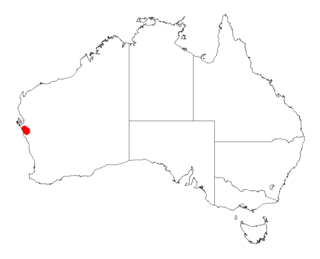
Acacia plautella is a shrub belonging to the genus Acacia and the subgenus Phyllodineae that is endemic to a small area along the coast of western Australia.

Acacia robiniae, commonly known as Robin's wattle, is a shrub of the genus Acacia and the subgenus Phyllodineae that is endemic to south western Australia.

Acacia sphacelata is a shrub of the genus Acacia and the subgenus Phyllodineae that is endemic to south western Australia.
Acacia adnata is a shrub of the genus Acacia and the subgenus Plurinerves that is native to Western Australia.

Acacia dissona is a shrub of the genus Acacia and the subgenus Plurinerves that is endemic to an area of south western Australia.

Acacia hadrophylla is a shrub of the genus Acacia and the subgenus Plurinerves that is endemic to south western Australia.
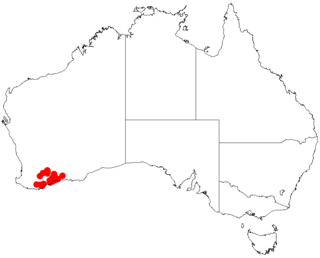
Acacia tetanophylla is a shrub of the genus Acacia and the subgenus Plurinerves that is endemic to an area of south western Australia.

Acacia undosa is a shrub of the genus Acacia and the subgenus Plurinerves that is endemic to an area of south western Australia.
Acacia vincentii is a shrub of the genus Acacia and the subgenus Plurinerves that is endemic to an area of north western Australia.
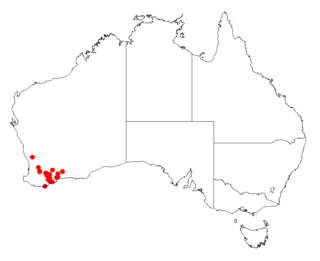
Acacia amputata is a shrub of the genus Acacia and the subgenus Pulchellae that is endemic to an area of south western Australia.
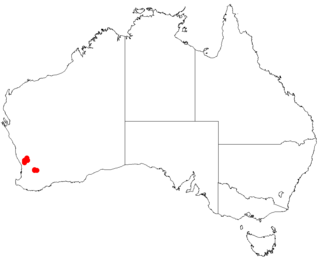
Acacia anarthros is a shrub of the genus Acacia and the subgenus Pulchellae that is endemic to an area of south western Australia.

Acacia depressa, also commonly known as echidna wattle, is a shrub of the genus Acacia and the subgenus Pulchellae that is endemic to south western Australia. It was listed as vulnerable according the Environment Protection and Biodiversity Conservation Act 1999 in 2007.

Acacia drewiana is a shrub of the genus Acacia and the subgenus Pulchellae that is endemic to an area of south western Australia.

Acacia fagonioides is a shrub of the genus Acacia and the subgenus Pulchellae that is endemic to an area of south western Australia.

Acacia grisea is a shrub of the genus Acacia and the subgenus Pulchellae that is endemic to an area of south western Australia.

Acacia lateriticola is a shrub of the genus Acacia and the subgenus Pulchellae that is endemic to an area of south western Australia.
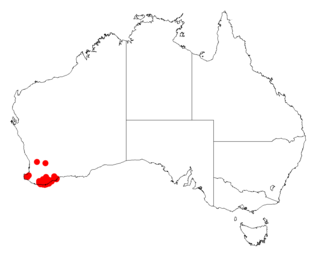
Acacia luteola is a shrub of the genus Acacia and the subgenus Pulchellae that is endemic to an area of south west Australia.



















